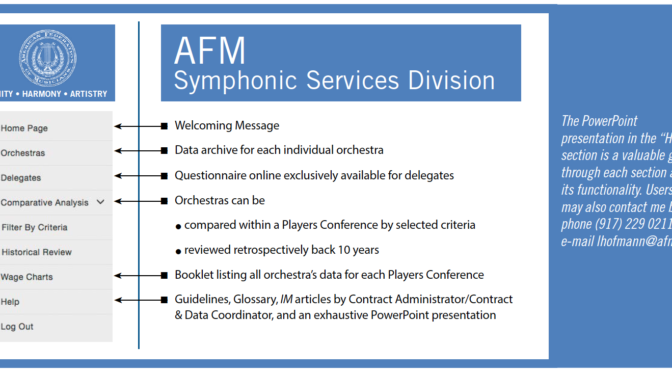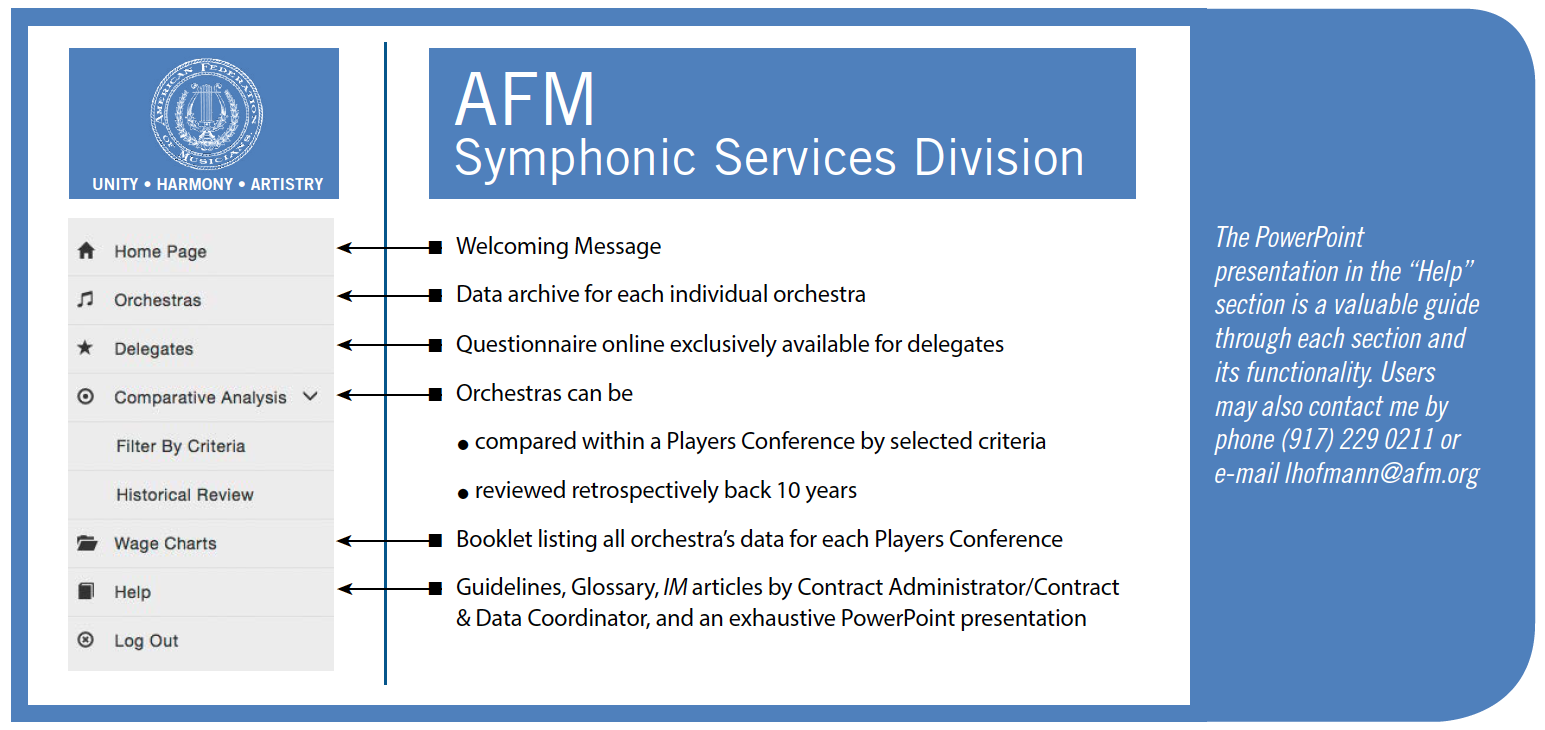 by Laurence Hofmann, AFM Symphonic Services Division Contract Administrator/Communications and Data Coordinator
by Laurence Hofmann, AFM Symphonic Services Division Contract Administrator/Communications and Data Coordinator
A unique digital tool and a dynamic and interactive database
The website dedicated to the symphonic charts is wagechart.afm.org. All AFM members with a registered account have access to this invaluable tool that ultimately eases the understanding of the symphonic world.
Wagechart is an online platform where most current, as well as historic, data about wages and working conditions for symphony orchestras affiliated to the players conferences are collected and made available for ad hoc industry analysis. This is possible thanks to the extraordinary Comparative Analysis tool. Symphonic negotiation committees can use this tool to gather necessary basic information and generate tables and graphs in preparation for upcoming negotiations.





